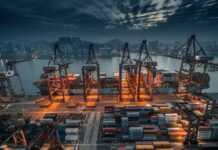In the years that have gone by, the packaging sector has gone on to experience a major shift as consumer demand when it comes to sustainability has grown stronger. Packaging waste and single-use plastics are giving way to a novel paradigm named sustainable packaging.
In today’s scenario, eco-conscious consumers are looking to seek brands that prioritise environmentally friendly practises, thereby making sustainable packaging a major factor in the success of businesses.
Bradley Saveth happens to be serving as the President and CEO of global manufacturing and suppliers when it comes to packaging solutions that are customised to the food service sector, and as per him, his customers include many of the world’s biggest and most iconic restaurant chains, retailers, as well as airlines.
Because of the fact that he closely works with the major chains and witnesses the impact of their choices in packaging on both the environment and business functioning, he has gone on to gain exceptional expertise in the gamut of sustainability and gauge what it takes to help brands opt for more eco-friendly options related to packaging.
According to him, he has come to understand the distinct challenges that the chains go on to face in terms of sustainability. Managing an equilibrium to gauge the need for efficient as well as rightly priced packaging solutions due to the growing demand for eco-friendly choices happens to be a fragile task. That said, by way of innovative strategies as well as collaborative efforts, brands can transition towards sustainable practises.
Eco-friendly materials
As issues related to climate change as well as plastic pollution continue to consistently mount, sustainable packaging goes on to offer a solution that is indeed compelling enough. By making use of materials that are recyclable and made from renewable sources, organisations can go on to prominently lessen their environmental impact.
Plastic and Styrofoam, which are traditional packaging materials, are getting replaced by options such as cardboard, recycled paper, plant-driven plastics, and materials that are compostable. These not only lessen the carbon impact but also help in having a circular economy by way of closing the loop via recycling and the process of composting.
Sustainable packaging compliments consumer values, thereby attracting customer portfolio that looks for products which reflect their commitment to a greener future.
Take design approaches that are innovative
Sustainable packaging is not only about the materials that are used but also has innovative design approaches that optimise the efficiency of packaging. For instance, Minimalist packaging, gets rid of unwanted layers and focuses on operations and simplicity. This not only goes on to lessen the waste but also elevates the entire brand’s aesthetic.
In addition to this, companies are also leveraging the tech that’s related to smart packaging, like intelligent labels as well as QR codes, so as to offer consumers information about the product as well as promote recycling practises.
Making supply chains efficient
Sustainable packaging goes beyond the end of the product; it also has traits concerning the optimisation of the overall supply chain. Companies are looking to discover ways to lessen transportation-driven emissions by way of optimising packaging shapes as well as sizes, reducing fossil fuel usage, and adopting sustainable logistics practises. This approach, which in every way can be termed as holistic, is embedded in packaging processes every element.
When optimising the supply chain to elevate packaging sustainability, the following steps can be considered very effective:
Emphasis on partnerships and transparency: Making robust partnerships and fostering open communication with manufacturers, suppliers, and providers of logistics happen to be crucial. By sharing sustainability goals and anticipations across the supply chain, businesses can work on identifying improvement areas and also execute practises that are eco-friendly. Partnerships also help the exchange of ideas as well as best practises, enable numerous sets of eyes to review each element, and offer diverse perspectives as well as skills.
Making packaging design seamless: Decreasing packaging waste and optimising sizes as well as shapes can significantly lessen transport-related emissions. By re-assessing the packaging materials, business leaders can pinpoint choices so as to use lighter-weight materials or also discover options that happen to have a lesser environmental challenge.
That said, while optimising the supply chain, it is important to consider certain key points so as to avoid potential pitfalls.
Not to pay heed to local sourcing options: While global sourcing can go on to offer many cost benefits, it often comes with long-distance transportation, thereby resulting in higher emissions.
Avoid solutions that are short-term: When making sure to optimise the supply chain for sustainability, it is imperative to go ahead with a long-term perspective. Focus on executing solutions that happen to have lasting advantages rather than going for just quick fixes. Short-sighted approaches may go on to have unintended results or even unsustainable future practises.




























